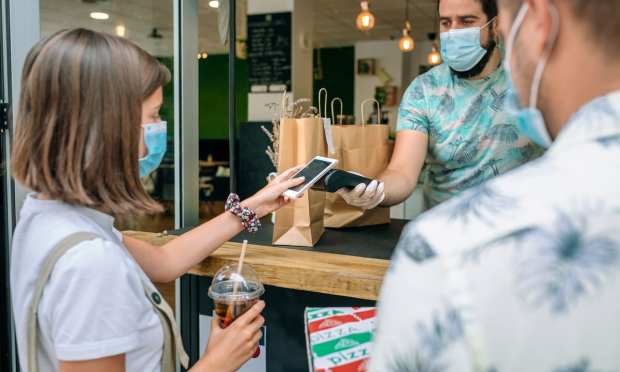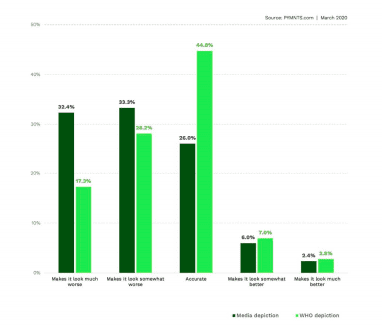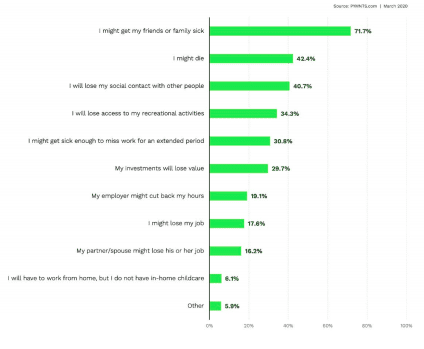One Year: How Consumers Have Changed In Response To COVID

Anniversaries are usually happy events — celebrated with gifts, balloons and parties to celebrate. But the anniversary we as a nation collectively pass this week had none of the above, firstly because no one particularly wanted to celebrate it and secondly, because the event precludes celebration.
It was a year ago, on March 11, 2020, that COVID-19 shutdowns first started in California — but as we all know, they didn’t stop there. The pandemic went on to shut down professional sports, theater, movies, getting on airplanes, eating in restaurants, working in offices, going on vacations — pretty much any activity that required leaving the house was, for a roughly six-week period, banned across the United States.
Since reopenings started, some of those things have begun to recover — some have remained in the deep freeze — and businesses large and small have struggled to strategize survival plans for a wholly unexpected and unprecedented event.
And consumers, well, they adapted to the digital world and recreated their habits toward lives now carried out online. The people who emerge from the pandemic, on the blessed day it ends and passes into the annals of history, will not be the same ones that wandered in unawares a year ago.
A fact PYMNTS is intimately acquainted with since we’ve been surveying them since before the beginning.
Who We Were
PYMNTS’s first pandemic conversation with consumers happened five days before the first lockdowns went into effect last year — at which point we surveyed a little over 2.000 census balanced respondents about their earliest reactions to the looming pandemic.
And believe it or not, once upon a time, they weren’t really that worried; they didn’t think it was going to be a big deal. Only about a third (36.9 percent) were “very” or “extremely” worried — though an additional 48.4 percent were “somewhat” or “slightly” concerned about it. Around 14.7 percent remained unconcerned.
And early on, concern was demographically distributed, with bridge millennials expressing the highest levels of concern, with 44.1 percent of consumers ages 32 to 41 reporting they were either “very” or “extremely” concerned about COVID-19. This compares to 41.3 percent of millennials and 37.4 percent of Gen X who said the same.
Baby boomers and seniors, the group that was ultimately most susceptible to COVID-19, were the least worried of all in early March, with just 32.9 percent saying they were “very” or “extremely” concerned about the outbreak.
 Those surveyed, however, didn’t seem to believe they were getting great information about the pandemic back in early March 2020. The PYMNTS survey demonstrated that 65.7 percent of consumers believed that media coverage of the outbreak made it look at least “somewhat” more serious than it was, while 26 percent believed it was “accurate.”
Those surveyed, however, didn’t seem to believe they were getting great information about the pandemic back in early March 2020. The PYMNTS survey demonstrated that 65.7 percent of consumers believed that media coverage of the outbreak made it look at least “somewhat” more serious than it was, while 26 percent believed it was “accurate.”
Consumers have had much more confidence in the World Health Organization’s (WHO) depiction of the pandemic, even though a large portion is still very skeptical. Our research shows that 45.5 percent of consumers believed that the WHO’s COVID19 coverage exaggerated the outbreak’s dangerousness, while 44.8 percent said they believed the WHO’s coverage was “accurate.”
Doubts about the coverage aside, even as early as the first week of March 2020, there was already evidence consumers were changing their behaviors. Traveling, dining out and using public transportation systems all saw declines, with 43.8 percent of consumers saying they were traveling for personal reasons less often than they had before the outbreak; 49.4 percent said they were traveling internationally for personal reasons less; and 35.3 percent and 35.9 percent of consumers said they were dining at quick-service restaurants (QSRs) and sit-down restaurant less often.
By PYMNTS’s second consumer survey — this one taken a few days after the first shutdown started going into place — the changes in attitude started accelerating. Concerns about the pandemic notably picked up, with 85.3 percent of consumers who were at least “slightly concerned” about the pandemic on March 6 jumped up to 93.8 percent by March 17 —a 10 percent increase in about 11 days.
However, the more notable uptick was in those reporting they were “very” or “extremely concerned” about the virus, which popped up from 36.9 percent of all consumers on March 6 to 57 percent on March 17 — a 54.3 percent increase.
In that same roughly 11-day period, seniors and baby boomers did an abrupt about-face when it came to COVID-19 concern. The share of baby boomers and seniors expressing “very” or “extremely” strong concerns about it nearly doubled in those 11 days, from 32.9 percent to 60.5 percent. This means this group went from being the least concerned to the second-most concerned about the pandemic in less than two weeks.
 And those concerns started to crystalize around specific points, with worry they might infect their friends or family members being the leading reason participants reported, cited by 71.7 percent.
And those concerns started to crystalize around specific points, with worry they might infect their friends or family members being the leading reason participants reported, cited by 71.7 percent.
The second-most common reason consumers gave for feeling worried about COVID-19 was that they might die, a fear felt by 42.4 percent of those surveyed. Many consumers were also concerned that the pandemic would wreak havoc on their finances, with 30.8 percent of concerned respondents worried they would get sick enough to have to miss work for an extended period and 19.1 percent afraid their employers would cut their hours. We also saw 29.7 percent worried that their investments would lose value and 17.6 percent scared of losing their jobs.
Financial fears that, regrettably, many consumers came to see realized as early spring shutdowns prompted layoffs and worker furloughs that pushed U.S. unemployment to its highest levels since the Great Depression
Who We Will Become
PYMNTS continued to talk to consumers throughout 2020 and into 2021 — and those consumers continued to change. Their estimates for how long the pandemic will last have persistently stretched out over time. In the early surveys, consumers were expecting COVID-19 to be a three- to four-month event that would be a distant memory by the end of summer 2020.
When we last asked, the most common estimate among consumers is that there is still another year ahead of us before the world will return to something like the normal they left behind in terms of their feeling free to resume their real-world lives again.
And how much like the old normal will normal resemble when it finally emerges sometime late this year or early next year? As PYMNTS’ data demonstrates, consumers started rapidly reorganizing around new digital habits and rapidly found that they like them. Consumers saw those habits were more convenient, faster, safer and an upgrade to the way they used to do things. The digital genie, as innovators and market watchers have told PYMNTS all year long, is out of the bottle as of early 2021. No one knows where consumers are going next — but everyone is sure that the one place they aren’t going is backward.
So PYMNTS has kept up the conversation, and as of next week, we’ll have the latest update on the pandemic period from the consumer-eye view; and where they think this is all going next.
